Which will be the lucky number for you?
Do you keep running into issues while using iMessage on your iPhone? Despite how great Apple’s instant messaging service is, various things can stop it from working properly. Server-side complications, connectivity hiccups, improperly configured iMessage settings, and bugs, can all contribute.
If iMessage takes ages to send your messages, fails to deliver them, or syncs conversations incorrectly, working your way through the troubleshooting methods that follow can help. Not every fix will work for your particular problem, so feel free to skip those that don’t apply.
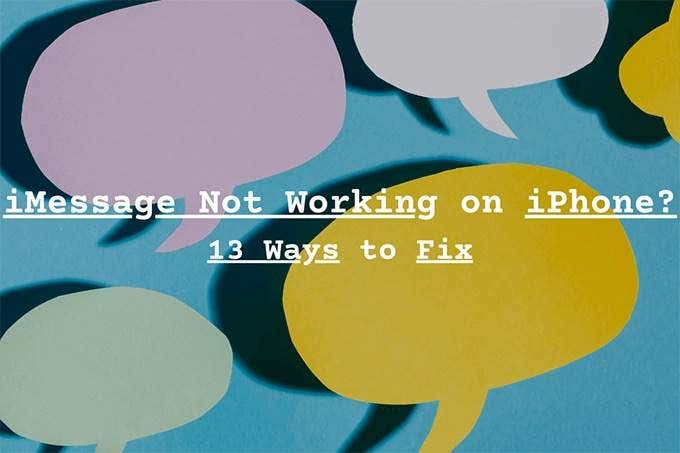
1. Check iMessage System Status
iMessage routes your messages through the Apple servers. If you had no issues using the service just a moment ago but iMessage is not working now, then it’s worth checking that there aren’t any problems on the server side.
Head into the Apple System Status page and scroll down to iMessage. If you see a known issue listed next to it, you must wait it out until Apple resolves it. If there are no problems, you should see a green-colored dot or an Available tag instead.
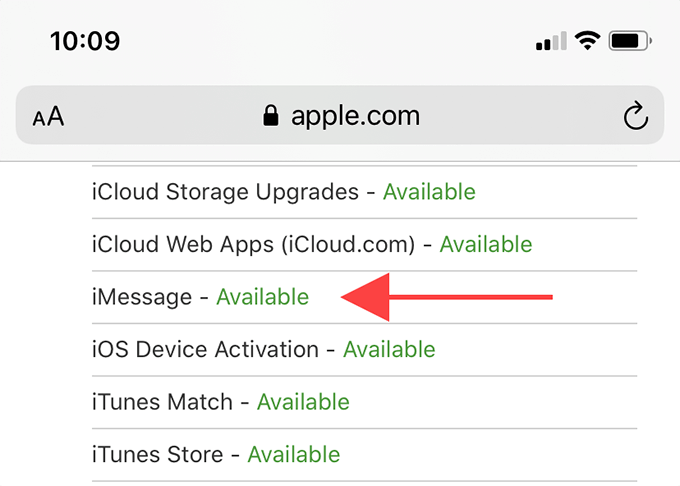
2. Check Wi-Fi/Cellular Data
Check that there’s nothing wrong with your internet. Try opening a few websites in Safari, playing some videos on YouTube, etc. If they load normally, skip ahead. If not, here are a few quick things that you can try.
- Restart your Wi-Fi router.
- Connect to a different Wi-Fi network.
- Renew Wi-Fi lease.
- Open the iPhone’s Control Center and toggle Airplane Mode on and off.
- Confirm that you haven’t used up your daily or monthly quota of cellular data.
- Disable VPN (Virtual Private Network).
There are other connectivity-related issues that can lead to iMessage not working.
3. Resend Message
If iMessage fails to deliver a message due to a momentary connectivity issue, either on your side or the recipient’s end, it may still go through if you resend it again after some time.
To do that, tap the red-colored exclamation point next to the undelivered message and select Try Again. In case of an emergency, you can also send it out as a regular text message. To do this, tap the Send as Text Message option instead.
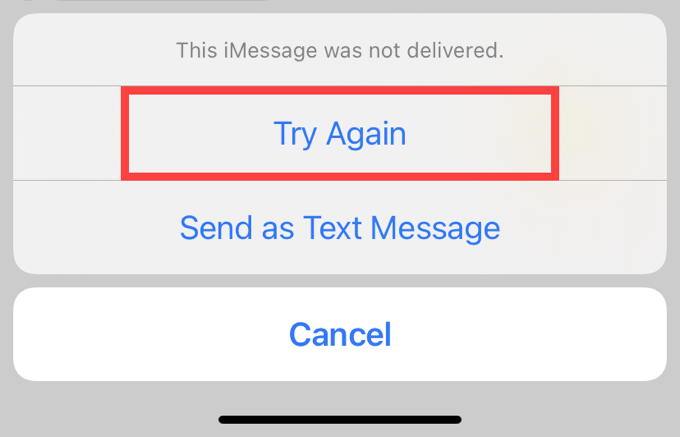
4. Enable/Disable Send as SMS
You can also configure the Messages app to send regular text messages (which are denoted by green text bubbles) automatically in instances where iMessage fails to work. To do that, open the Settings app on your iPhone, select Messages, and turn on the switch next to Send as SMS.
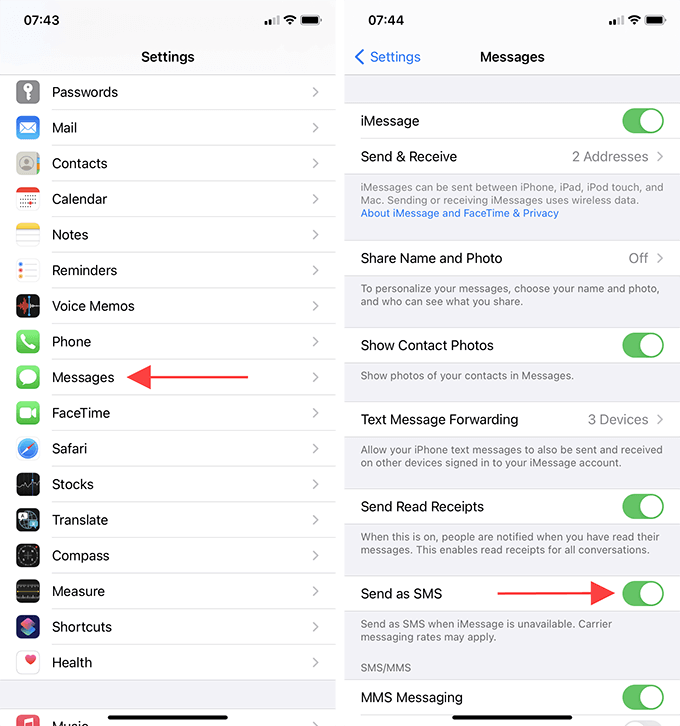
If you already have the setting enabled and want to stick to using iMessage only, go to Settings > Messages and turn off Send as SMS. That will not affect any conversations with non-iMessage contacts. You can also resend failed messages as regular text.
5. Turn iPhone Off/On
Try turning your iPhone off, and then back on. That alone can resolve random bugs or glitches that prevent apps—such as Messages—from functioning normally.
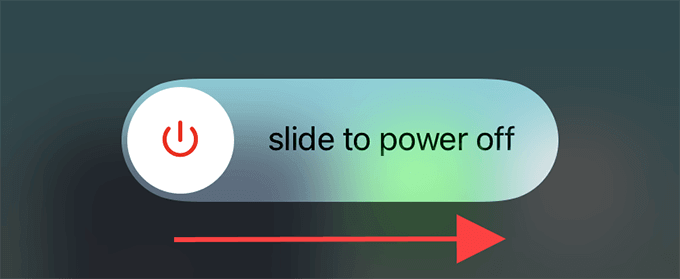
- If your iPhone uses Face ID, quickly press and release the Volume Up button, press and release the Volume Down button, and press and hold the Side button. Then, swipe to the right on the Slide to Power Off prompt to turn off your iPhone. Wait for a few seconds, and press and hold the Side button again to power it back on.
- If your iPhone uses Touch ID, press the Side button to bring up the Slide to Power Off prompt. After turning off your iPhone, press and hold the Side button again to turn it back on.
6. Check iMessage Settings
If iMessage is still not working and your iPhone isn’t sending or receiving messages from a particular set of iMessage contacts, check if the service is set up properly.
Open the Settings app, tap Messages, and select Send & Receive. Then, ensure that you’ve selected your phone number and the relevant email addresses that you want to receive and reply to iMessages with. You can set this under the You can receive iMessages to and reply from section.
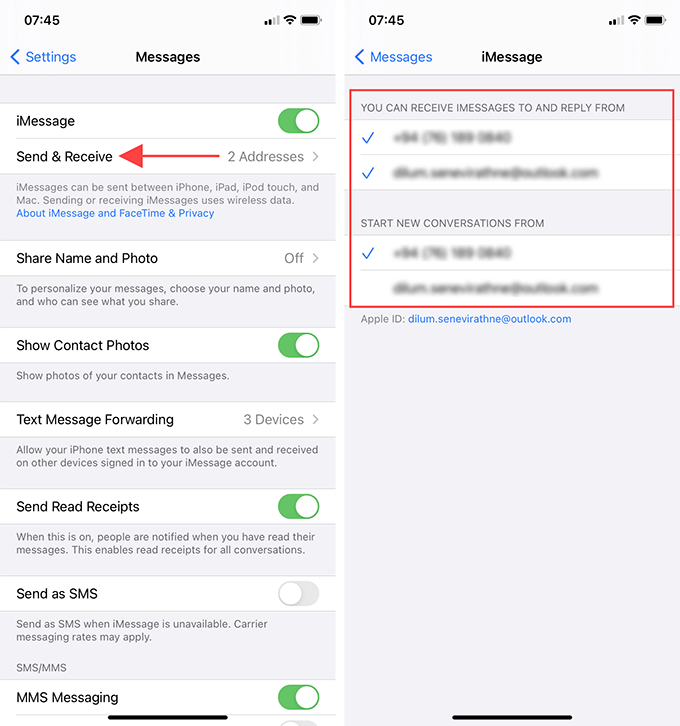
Also, make sure to select the correct phone number or email address that you want to initiate iMessage conversations with via the Start new conversations from section.
7. Turn iMessage On/Off
Turning iMessage off, and then back on, is another fix that can help resolve issues with slow or undelivered messages. Open the Settings app and select Messages. Then, turn off the switch next to iMessage.
Restart your iPhone. Then, head back into Settings > Messages and turn on the switch next to iMessage.
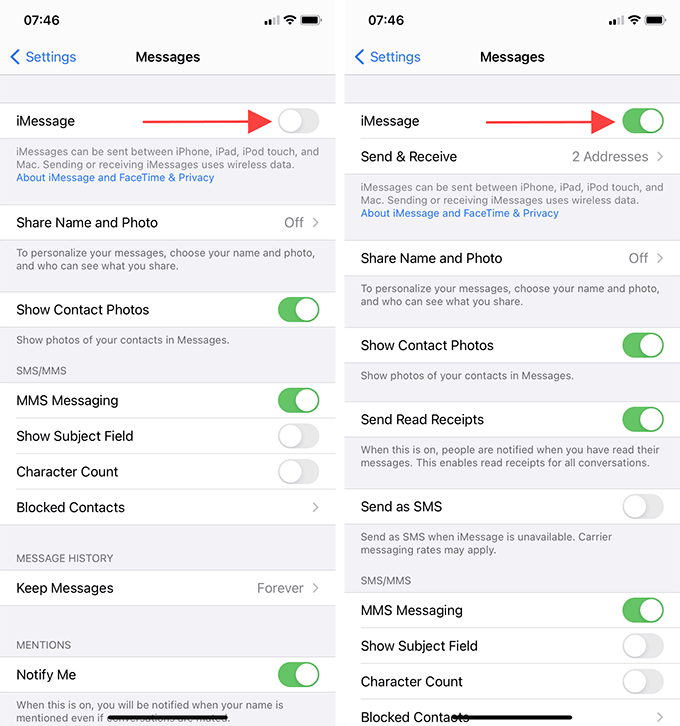
Note: Your iPhone may take up to a few minutes to reactivate iMessage.
8. Update iOS
If you recently upgraded to a new version of iOS, it’s important to keep installing the latest incremental updates. That allows you to rule out any known software-related bugs preventing iMessage from functioning properly.
To do that, open the Settings app, select General, and tap Software Update. If there’s a software update listed, tap Download and Install.
9. Delete Conversation/Retry
If iMessage fails to work with a specific contact only, try initiating a new conversation from scratch. Start by deleting the current thread—swipe it to the right and tap the Trash icon. If you have any important attachments, you may want to save them before you do that.
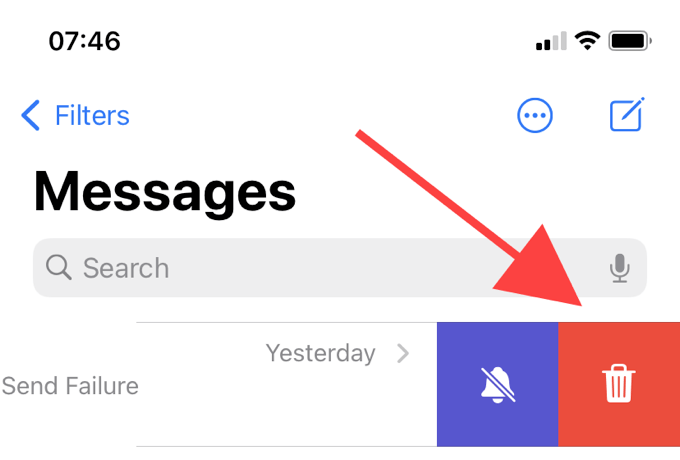
Then, tap the New Message icon to the top-right of the Messages app to start a new conversation.
10. Check Date and Time
Do you have the correct time zone selected on your iPhone? If not, iMessage may not work properly.
Head into Settings > General > Date & Time. Then, turn on the switch next to Set Automatically. Or, tap Time Zone to pick a time zone manually.
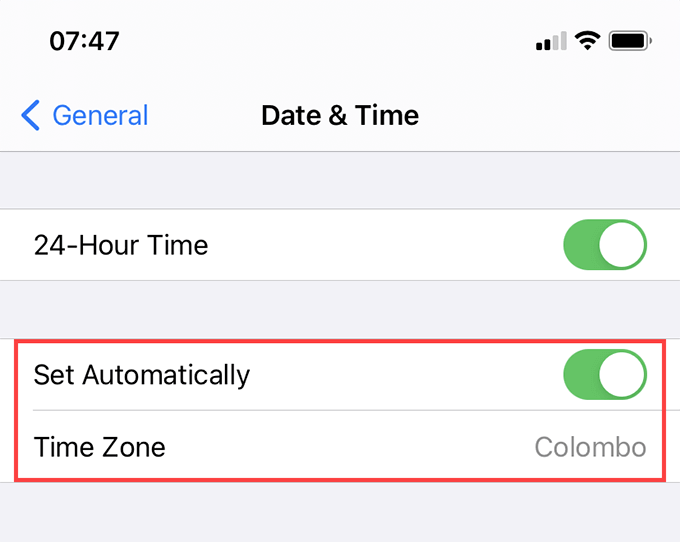
11. Change DNS (Wi-Fi Only)
Are your iMessages failing to go through while connected to a particular Wi-Fi connection only? Changing the DNS (Domain Name System) servers to a popular DNS service such as Google DNS can help.
1. Open the Settings app and tap Wi-Fi.
2. Tap the i-shaped icon next to the active Wi-Fi connection.
3. Tap Configure DNS.
4. Select Manual, and then delete the existing DNS servers.
5. Add the following DNS servers.
- 8.8.8.8
- 8.8.4.4
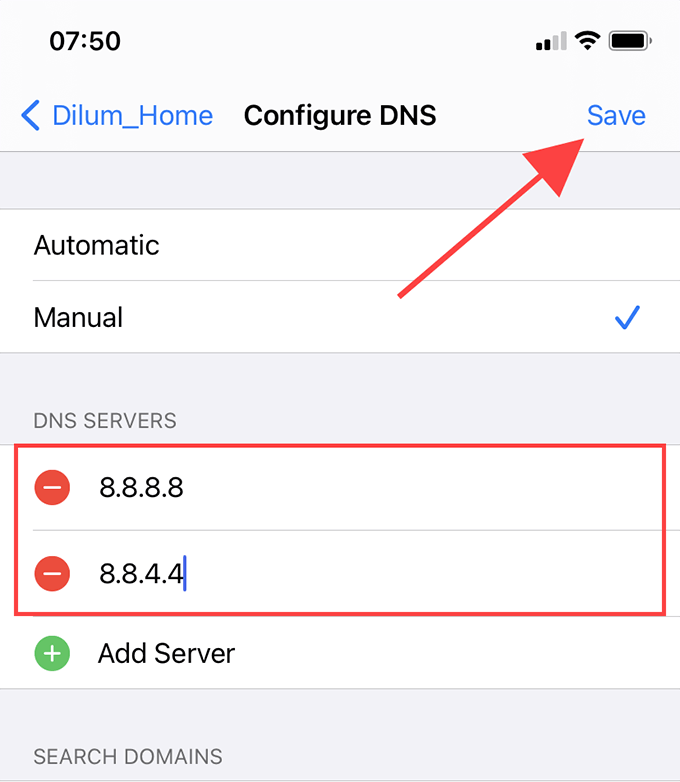
6. Tap Save.
Open the Messages app and try resending any failed iMessages.
12. Reset Network Settings
If you still have issues with iMessage, you may want to reset your network settings. Open the Settings app, tap General, tap Reset, and tap Reset Network Settings. Then, tap Reset Network Settings again to confirm.
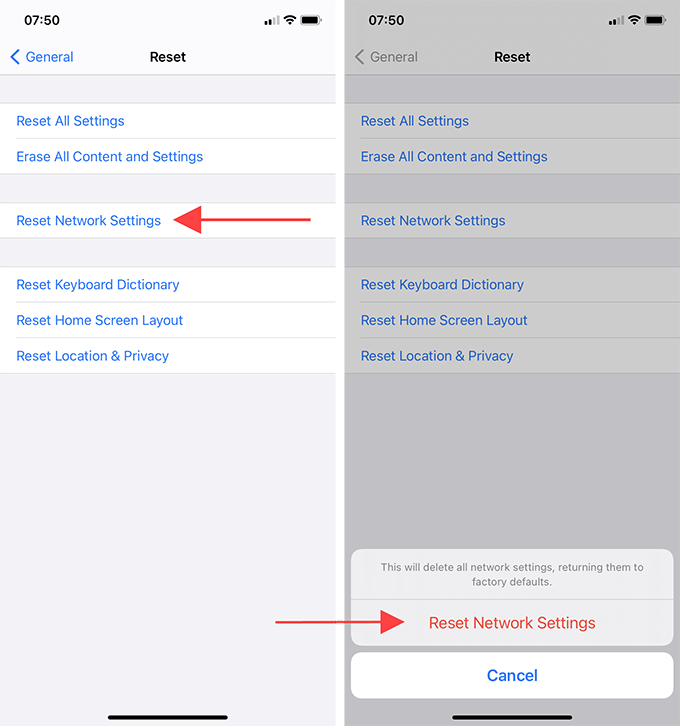
Note: The reset procedure will delete all saved Wi-Fi networks, so you will have to rejoin manually afterward.
13. Sync Messages with iCloud
Does the Messages app fail to sync iMessage conversations with the rest of your devices? If so, check if you have Messages in iCloud enabled. To do that, head into Settings > Apple ID > iCloud and turn on the switch next to Messages, if disabled.
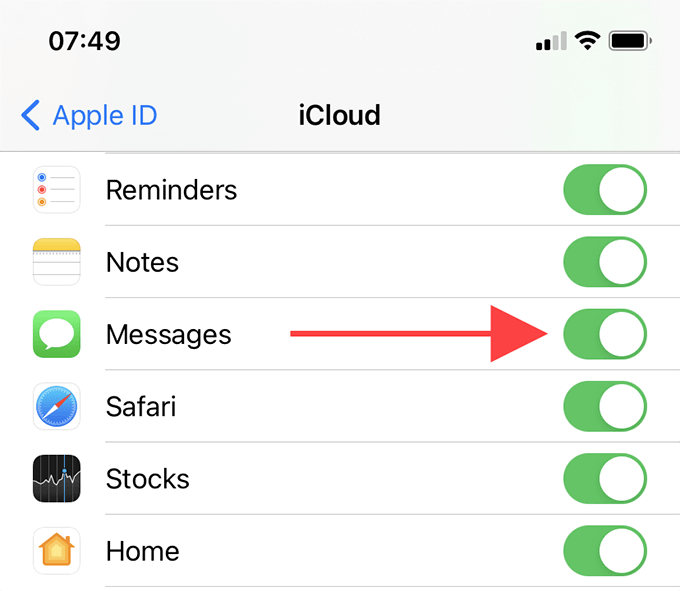
You must repeat this on other Apple devices as well. The process works the same on the iPad. On the Mac, however, you must first open the Messages app, select Messages on the menu bar, select Preferences, switch to the iMessage tab, and then check the box next to Messages in iCloud.
Start Using iMessage Again
Hopefully, the fixes above worked and you are back to using iMessage as usual on your iPhone. You can also resolve similar iMessage-related issues on the Mac. Or, just call it a day and play a few iMessage games with some friends instead.




